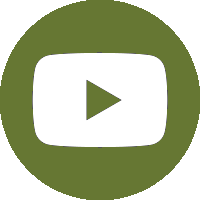Update : if you are having trouble viewing the video try this direct link http://www.youtube.com/watch?v=-rfxy7mn7mw
Here is what you have all been eagerly waiting for NASA World Wind 1.4 is out!
After lots of blood and sweat from the Open Source team, 1.4 has finally been approved by NASA for release. As my blog readers know NASA had to shift it’s priorities to the upcoming Java version of World Wind, leaving 1.4 effectively orphaned, but the Open Source community came together and with a lot of hard work we were able to finish what Chris Maxwell started.
So what is so great about 1.4? First of all it is written using .NET 2.0 which allows for some cool new features but more importantly, thanks to Microsoft allowing developers to use visual C# express for free we were able to easily increase the development team, who simply could not afford to purchase visual studio. Ok they say pictures speak a thousand words, so I made another video to show off some new features, visit the What’s new in 1.4 page at WorldWind Central for more details on how to use these features.
Video run down –
First off we see the globe textured using classic Blue Marble then zoom in to NY state (from the zoomit! layer by WWC/FEF), you can also see placenames here provided by WFS (a new feature in 1.4).
Next comes the spinning Earth, showing off HDR atmospheric scattering and sunlight shading, pretty isn’t it? You can also see global clouds, which are downloaded each time you start World Wind and are only a few hours old.
Now we zoom in to the Grand Canyon, the imagery here is a combination of two layers, NLT Landsat (15m/pixel) and USGS 1m grey scale imagery, the opacity of the USGS layer is set to 100, this gives a great colour mix.
To the Moon Alice! Now we soar over the cratered surface of te Moon viewing first Clementine 30xx then Clementine 40xx Imagery, then back to Clementine 30xx as we zoom back into space.
A quick spin round Venus (Magellan imagery), then on to Mars as we fly down into Valles Marineris( MOC imagery), after a quick flight through the canyon we come up and swoop towards Olympus Mons, rotate around the largest volcano in the Soar system then return once again to space.
Now on to Jupiter and it’s massive storms, then we return to the safety of planet Earth, and zoom down under to New Zealand to witness a stunning sunrise, again achieved using World Wind’s new sunshading and atmospheric scattering code.
After a short intermission we return to see some more advanced features, GE users can quit now ;), A view of Mount St.Helens greets us, this is the USGS Topographic layer with fixed sunshading, the sunshading really brings out features that a paper map just can’t. Once we have had a quick view of the surrounding area we return to the volcano, then swap layers between, Geocover 1990, Geocover 2000, NLT pseudo color and NLT Landsat. Also note here the new globe overview, this allows you to easily discern your viewing position on Earth’s surface even when zoomed in, and the scale bar so you can get an idea of the size of the objects you are viewing.
Next we see near real time weather from NRL, by selecting several entries you can see animated sequences, the first sequence is global IR cloud cover, then global water vapor, there are too many other weather data sets to even attempt listing here so lets move on.
Here we see the built in WMS browser, selecting data from the SVS server we can see an animation of sea surface temperatures during hurricane Katrina.
Now we see the ever popular earthquake marker plugin, this is the 7-day list, clicking on an icon opens the appropriate page on the USGS website, this page is no longer opened in an external browser like previous versions of World Wind, but in the brand new internal web browser.
And on to Rapid Fire MODIS, this allows you to view data collected from the MODIS satellites, such as hurricane images, quickly and easily.
Finally we view the new waving flags plugin, this lets you see data collected from the CIA world factbook in an interesting new way. After you click a flag you see a window open with general information about the country, by clicking the left and right arrows you can see more specific data such as birth and death rates. The data is also graphically displayed on the screen as a kind of 3-D bar graph, this allows you to easily compare data between countries, and of course looks darn cool.
Well as they say, that’s a wrap folks, I hope you all enjoy World Wind 1.4, and my trailer of course (you can download a high res version here, be warned it’s big), thanks to everyone who helped make 1.4 possible, now to sleep for a week…

















Add a Comment Below